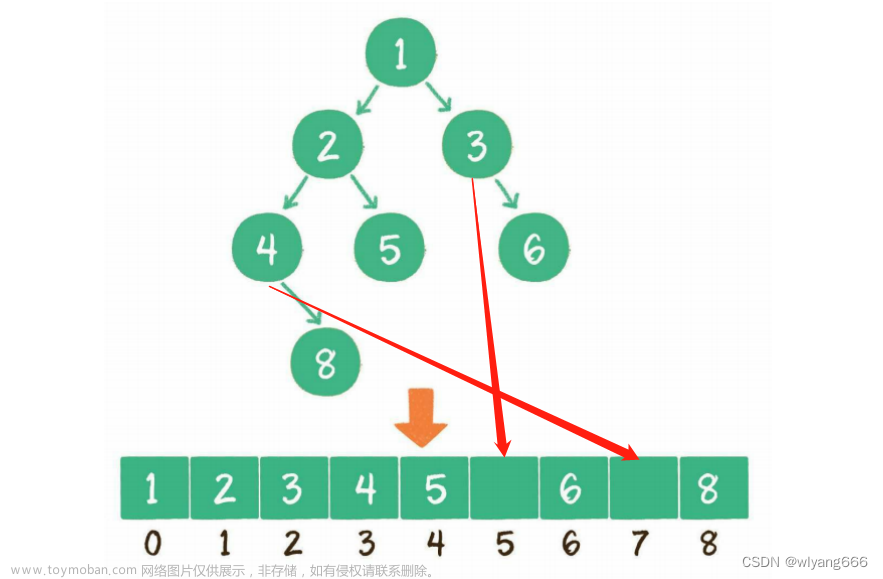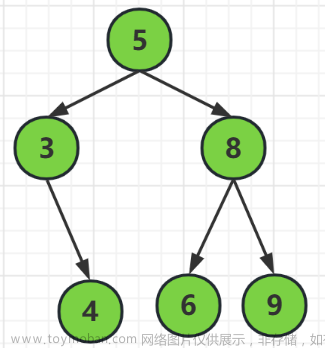二叉树的数组表示
表示完美二叉树
若某节点的索引为
i,则该节点的左子节点的索引为2i+1,右子节点的索引为2i+2文章来源地址https://www.toymoban.com/news/detail-802633.html
代码实现
- 给定某节点,获取它的左右字节点,父节点
- 获取前序遍历,中序遍历,后序遍历,层序遍历
/* 数组表示下的二叉树类 */
class ArrayBinaryTree {
public:
/* 构造方法 */
ArrayBinaryTree(vector<int> arr) {
tree = arr;
}
/* 列表容量 */
int size() {
return tree.size();
}
/* 获取索引为 i 节点的值 */
int val(int i) {
// 若索引越界,则返回 INT_MAX ,代表空位
if (i < 0 || i >= size())
return INT_MAX;
return tree[i];
}
/* 获取索引为 i 节点的左子节点的索引 */
int left(int i) {
return 2 * i + 1;
}
/* 获取索引为 i 节点的右子节点的索引 */
int right(int i) {
return 2 * i + 2;
}
/* 获取索引为 i 节点的父节点的索引 */
int parent(int i) {
return (i - 1) / 2;
}
/* 层序遍历 */
vector<int> levelOrder() {
vector<int> res;
// 直接遍历数组
for (int i = 0; i < size(); i++) {
if (val(i) != INT_MAX)
res.push_back(val(i));
}
return res;
}
/* 前序遍历 */
vector<int> preOrder() {
vector<int> res;
dfs(0, "pre", res);
return res;
}
/* 中序遍历 */
vector<int> inOrder() {
vector<int> res;
dfs(0, "in", res);
return res;
}
/* 后序遍历 */
vector<int> postOrder() {
vector<int> res;
dfs(0, "post", res);
return res;
}
private:
vector<int> tree;
/* 深度优先遍历 */
void dfs(int i, string order, vector<int> &res) {
// 若为空位,则返回
if (val(i) == INT_MAX)
return;
// 前序遍历
if (order == "pre")
res.push_back(val(i));
dfs(left(i), order, res);
// 中序遍历
if (order == "in")
res.push_back(val(i));
dfs(right(i), order, res);
// 后序遍历
if (order == "post")
res.push_back(val(i));
}
};
文章来源:https://www.toymoban.com/news/detail-802633.html
到了这里,关于数据结构之二叉树的数组表示的文章就介绍完了。如果您还想了解更多内容,请在右上角搜索TOY模板网以前的文章或继续浏览下面的相关文章,希望大家以后多多支持TOY模板网!










